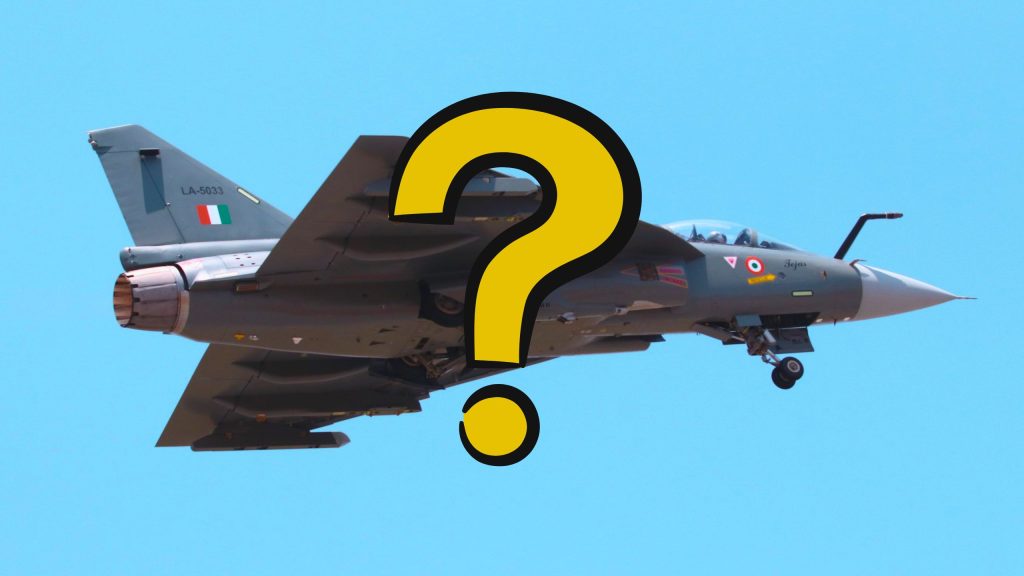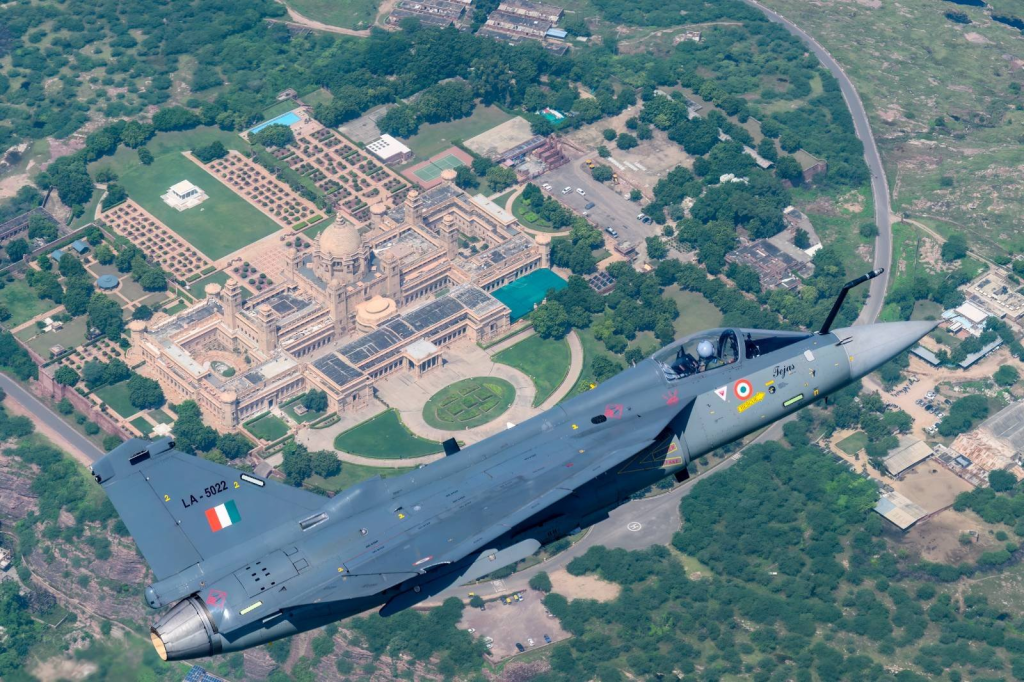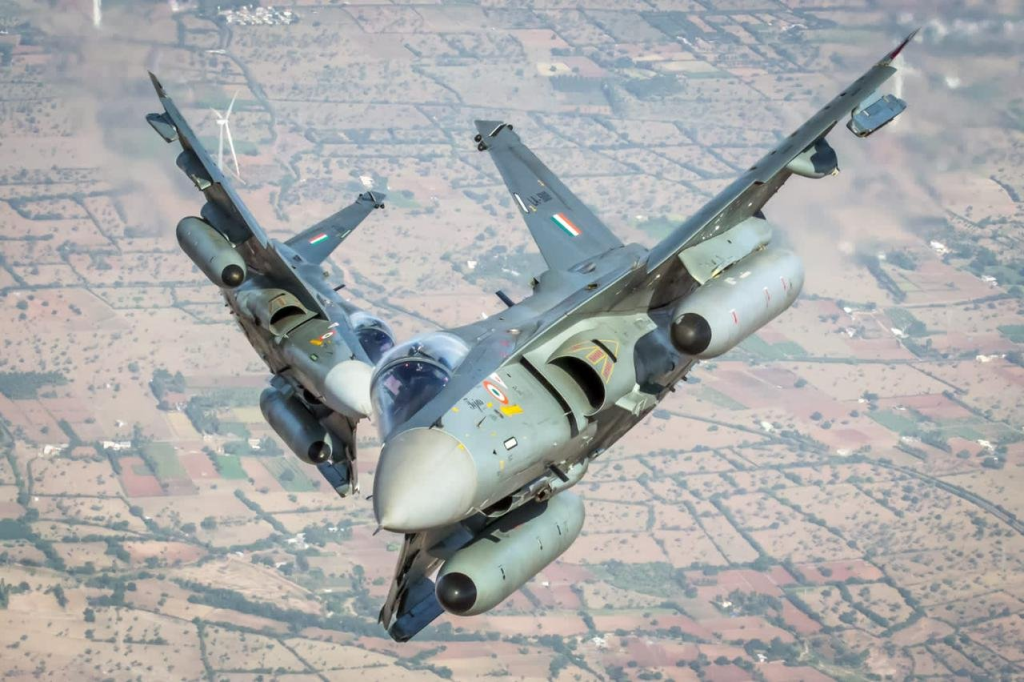
By K. Singh for Livefist
In recent days and weeks there has been a growing amount of rhetoric aimed at the Light Combat Aircraft’s (LCA) production agency Hindustan Aeronautical Limited (HAL). On the face of it this appears to have been sparked by the public comments of the Indian Air Force (IAF) Chief Of Air staff (CAS) at at the 21st Subroto Mukerjee Seminar. Although the CAS spoke extensively about the need to accept failings on all parties and to be more collaborative, the most prominent clip shared on social media related to the CAS’s comments on the LCA and specifically directed against the production delays from HAL.
“We should go back to 1984, when we conceived that aircraft. The first aircraft flew in 2001, 17 years later. The induction started another 15 years later, in 2016. Today, we are in 2024. I do not have the first 40 aircraft also, so this is the production capability,” he said.
This has once again opened the long simmering angst by many, including many vocal veterans. HAL has had many failings levied at them relating to development, production, QC/QA and ongoing maintenance and they have repeatedly failed to meet even their own timelines for most of their projects and production targets. However it is important not to let overriding narratives get in the way of facts.
HAL has produced thousands of aircraft over the 8 decades of its existence, most of these licence assembly most prominently over 600 MiG-21s and its variants. But this figure also includes over 300 Advanced Light Helicopters (ALH)- designed and produced in-house by HAL. Thus we can conclude HAL has knowledge of how to produce complete aerospace products and that too at significant scale, thus has this knowledge been lost with the LCA offering an insurmountable challenge to them?
Without re-litigating the entire development saga of the LCA and its once linked power plant the Kaveri one should pay attention to at least the most significant milestones of the last decade namely:
Initial operational clearance 2 (IOC-II) was issued by the IAF to the LCA in December 2013 as a bridge until the jet was certified to its full envelope ( Full Operational Clearance, FOC). The final IOC specification jet was delivered in early 2019.
The FOC process began in December 2014 and awarded in February 2019 paving the way for MK.1 of FOC specifications to be delivered And critically orders. Of the 40 jets the CAS speaks of, 16 were MK.1 IOC units, 16 MK.1 FOC units and 8 2 seat MK.1 trainers thus substantial hardware and differences existed across all 3 specifications. Until March 2021 when the IAF placed orders for the 73 MK.1A+ 10 additional trainers-incidentally that the IAF had never originally planned for but that is a different story- the sole balance of orders for the LCA was 40 units. It is thus fair to say one cannot expect much more than a trickle of production capacity with such limited orders spread across 3 different versions.
HAL has continuously slipped on its own production timelines for the 16+16+8 MK.1s however with the final unit of this original order LT5208, the last of the trainers, having been spotted flying recently completion of this order is soon to occur allowing for the closing of this chapter finally so the focus can move forward.
But what about the private sector
An often repeated call by those that would lay the full blame of the production delays at HAL’s door is to give the final assembly and lead integration role to the private sector. Whilst there is no doubt there are multiple private sector entities in India ,including but not limited to TASL, Mahindra Defence and L&T, who would be capable of managing such a complex project. Indeed the C295 project will see TASL assemble at least 40 units at their facilities. But in order to make the substantial investments needed to setup production capacity of complex aerospace products it goes without saying that the private sector requires firm order commitments and signed contracts upfront. For example when the last of the 100 ordered K9 Vajra self propelled artillery guns (SPG) were delivered to the Indian army in 2019 Larsen & Toubro (L&T) who had assembled these products under licence from Hanwha Techwin ceased production at their facilities in Haizra, Gujarat, they did not continue producing the machines in anticipation of further orders that have only been firmed up in recent weeks to allow for a scaling up again and deliveries in the years to come.
Similarly when procurements such as the erstwhile Medium Multi Role Combat Aircraft (MMRCA) and Multirole Fighter Aircraft (MRFA) have been sanctioned they have offered substantial order commitments upfront; 126+63 and 114 respectively. Thus providing Indian production agencies the guarantees they would require to scale production accordingly and place appropriate investments in capacity as well as identifying suitable suppliers.
Conversely HAL had commenced production of the Light Combat Helicopter (LCH) Prachand in August 2017 with orders for the Prachand only arriving in March 2022 For 10+5 units (10 for the army and 5 for the airforce respectively) , all of which were delivered in a short period of time, well ahead of the standard delivery timelines of T0+36 months, as HAL had stockpiled limited series production (LSP) airframes.
Very similarly HAL has commenced LSP of the Light Utility Helicopter consisting of 6 units each for the Indian Air Force and Indian Army. This tiny production run is occurring in parallel to HAL’s construction of a greenfield helicopter production facility located in Tumakuru, Karnataka that was dedicated to the nation by Prime Minister Narendra Modi in February 2023 . Plans for this facility are to produce 30 helicopters annually under Phase 1, able to be scaled up to 60-90/year.
Again it is almost unthinkable that a private sector entity would make such investments in production capacity without sizeable upfront orders from users as the attempt, and failure, by HAL to outsource production of the ALH (civil) to the private sector shows. The private sector’s interest in production are directly linked to demand which is entirely expected for entities with shareholders and fiduciary responsibilities to them. However this point must be understood entirely by those that believe PSUs like HAL like and the private sector can be perfectly swapped out.
In an ideal world there would be a competitive landscape allowing for the sustainment of multiple market led companies and many of HAL’s critics will bring up the examples of Lockheed Martin and Boeing existing together in the US. However they will often fail to expand on how the US military industrial complex has scaled to have such colossal capacity. Primarily the US MIC is sustained by its mammoth domestic demand and further enhanced by exports to friendly nations backed by the United state’s government, for example the existing backlog of the F-35 is over 2400 aircraft allowing Lockheed Martin to have scaled up to their full planned production rate of 156 aircraft a year from last year.
On the other side of the Atlantic Ocean Dassualt delivered 21 Rafales in 2024 a backlog of 220 Rafales outstanding.
Order more, get more
It seems obvious to say but this fact seems to be alluding many, production capacity comes as a direct result of order commitments. Building complex finished products is a hugely complex process and HAL has dozens of tier 2/3 suppliers in and outside India both in the public and private sectors with an increasing quantum of work going to Indian private companies, for example HAL has outsourced the frontal fuselage construction to Dynamatic Technologies Ltd.

HAL continues to see its role as lead and final integrator for the LCA and is scaling accordingly Mk1A production facilities with 2 lines in Bengaluru already delivering LCAs, a third line is to become operational at Nasik in the coming months to be able to deliver at least 16 LCA/year when production stabilises, with an ability to scale to 24/year.

To reiterate, the point of these thoughts is not to defend HAL’s inconsistent performance towards meeting its own publicly stated timelines and targets as relating to the LCA however they are aimed at hoping to at least point out the very basics of the dynamics at work to hope they are better understood. Standing from a podium and declaring you need greater pace from your supplier will be unlikely to produce the desired results and only seek to attract those already intent on critiquing this long criticised project. One can argue PSUs should not exist and the govt of India should be divesting from them however in the defence sector where your sole customers are the Indian armed forces who often fail to offer firm order commitments for sizeable unit orders upfront they are perhaps a necessary evil for now.

Going forward with 73 MK.1A and 10 MK.1 trainers committed to in March 2021 HAL should have been able to scale up and stabilise production as well as placing orders for items with long lead-in times, and whilst the project had been somewhat delayed with the new version of the LCA still undergoing some validation and user nominated specification changes , the well reported delays with the delivery of the F404 engines from American company General Electrics (GE) have now put even a revised delivery scheduled firmly off track. With plans to use reserve engines (category B) and GE said to be expecting to deliver the first new F404 engines to HAL in the first quarter, the ball will once again be in HAL’s court to prove they can deliver when they have certainty and scale to work with, hopefully only further cemented by a further 97.
The focus should be on continuously feeding orders for the LCA MK1A and ensuring there are firm commitments of sizeable units for future projects such as the LCA MK.2, AMCA, IMRH etc, rewriting the past or attempting to obfuscate the present doesn’t help anyone and certainly will not address the IAF’s dwindling squadron strength.
K. Singh is a defence and aerospace commentator. He tweets at @KSingh_1469. Views expressed in this column are his own.

Well written balanced article. My congratulations to the author and the livefistdefence for putting the whole narrative in the right context.
‘Hindustan aeronautics’ – Shut it down or privatize it!! I was absolutely proud and followed the LCA right through the 90s and 2000s, for good reason. Even with out the indigenous engine and radar, it was a big win for India! But look at how we are still haggling over production and developmental delays in 2025, when we should be developing a replacement for it!!
I suggest the Air India way, even then it will take time to bare fruit because of how damaged its become. Don’t get me wrong, it was a relevant for a time & that needs to be acknowledged. But we should have moved on way back in late 2000s.
No buyer can give a large firm order for anything until he sees what exactly he’s ordering. HAL has simply been unable to show that in a timely fashion. When it takes 17 years to first flight, the threat environment has changed—impacting requirements. So, unfair to blame customer.
If India relies on HAL/DRDO it will have the same results with MK2 and AMCA. They are not capable of a build from scratch—only licensed assembly of kits.
This no large orders excuse is a deflection. Example the Super Sukhoi upgrade will take 15 years or 11 ac per year. We’re talking 2040 by which time you will have 4G fighter in the time of 6.5G ac—with a RCS of an aircraft carrier.
HAL is a spoilt child run by bureaucrats and socialist staff. They were not answerable and are avoiding giving answers even today. Let a couple of private players come in..we then check out HAL..Tata steel, Jindal , Lloyd’s Shyam metal have proved beyond doubt that they are far more efficient and creative and productive than SAIL .
To make assembly lines economical, they need to be run for 5 to 7 years full capacity at least, depending on the profit margins. ie higher order volumes are needed
It seems that this article is posted with intentionally hiding the crucial points related the selection of American jet engines of GE404 IN20 by IAF and Indian govt., inspite of various sanctions loaded on India post nuclear tests, which was never a friendly country to our BHARAT, Even today, we are not receiving this engines from American Co. and giving one after another dates of delivery, delayed more than 18 months. It seems we are trapped by American Govt. and this all is arm twisting tactics of US govt. for purchase of their military goods and stop trading with Russians. We should give credit to our Scientists who has overcome all challenges of fly by wire and so many such technologies denied by US and European countries. Actually, they want to sabotage our LCA project, for which we should support our indigenous products and should not fall prey to such negative things. It’s time to focus on right thing now.
What a long useless article. Solution of more orders is not acceptable as HAL unable to execute. Taking too long. Why should IAF reward you with orders. Best is to change management or sell this entity to Tatas or Adani or Ambani
Why such respondible officers of IAF are making statements in public while they should convey their feelings and their departmental urgrncies with the Government officially. Such crucial statements, as per me makes adverse effects on our secutity matters. Ok, we may be week on some point, which we are for long year as we did arrange any new fighter aircrafts for our airforce for long decades. During last 10 years the government has done enough to procure necessary requirements. Our sevurity forces are today in a much better position yhsn 10 year before.
So, stop speaking in public. Thats not good for the nation and also for the status of that officer. Their strong recommendations for some world suppliers may also put the impression of their undue alliance over their.